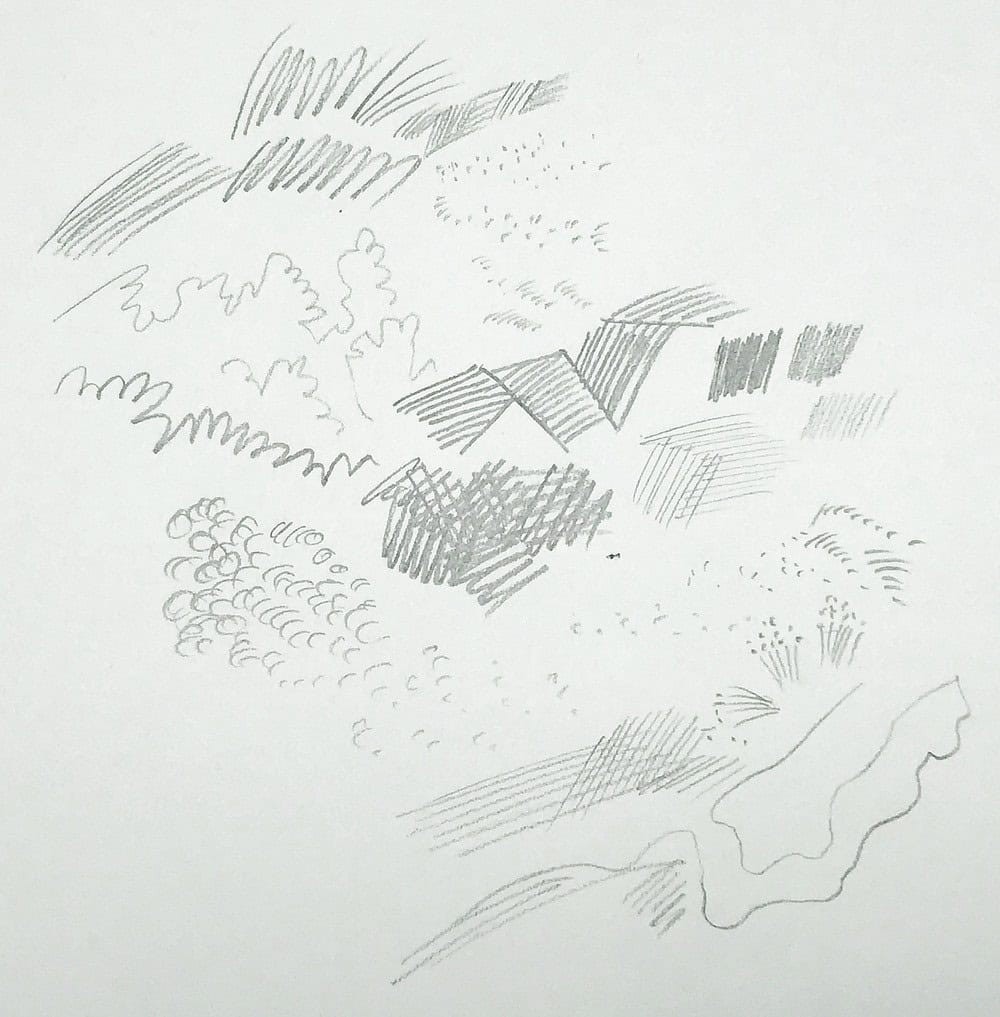Learning how to draw is a skill accessible to everyone, not just those with inherent talent. With practice and the right guidance, anyone can develop their sketching abilities. This How To Draw Guide provides a step-by-step approach, focusing on fundamental techniques and consistent practice to help you learn to draw anything.
1. Warm-Up and Hand-Eye Coordination Exercises
Before diving into complex drawings, it’s crucial to warm up and familiarize yourself with your tools. These exercises improve hand-eye coordination and loosen your drawing muscles. Experiment with various mark-making techniques using your pencil or pen. Create scribbles, doodles, dots, stipples, hatching, and zig-zag lines. Vary the pressure to explore the range of your drawing tool.
To further enhance hand-eye coordination, practice drawing straight and curved lines of different lengths. Then, move on to round shapes like circles and ellipses, followed by loose shapes like figure eights. Vary the size and pressure of your pen. Try drawing with your entire arm, keeping your elbow and wrist locked and making motions from your shoulder. This can help you create smoother arcs. Fill a page with these explorations, focusing on enjoying the process. Even a few minutes of these warm-ups before each drawing session can lead to smoother linework.
2. The Power of Basic Shapes
The foundation of all drawing lies in the ability to break down complex objects into basic shapes. These shapes include circles, rectangles, and triangles. Mastering these fundamental shapes is essential to effectively learn how to draw anything.
When observing an object, identify the underlying basic shapes and sketch them lightly onto the paper. This initial underdrawing serves as a framework for your final piece. For example, a rose can be simplified into a circle with lines attached, or a house into a rectangle with a triangle on top.
These gestural drawings should be loose and spontaneous, capturing the essence of the subject. Don’t focus on perfect lines or details at this stage; the goal is to establish the correct proportions and create a solid foundation to build upon.
3. Refining Lines, Angles, and Edges
Once you have a basic shape underdrawing, the next step is to refine your sketch with solid outlines. This involves carefully observing the subject and adjusting the lines, angles, and edges accordingly. Drawing is as much about observation as it is about physically putting lines on paper.
Compare the angles, shapes, and curves in your drawing to the subject. Make any necessary corrections to align the proportions with your observation. Observe closely before committing to a line, and draw what you actually see, not what you think you see.
You can use your pencil as a measuring tool to accurately translate angles from the subject to the paper. Often, the initial explorative stage involves drawing several loose lines. Now is the time to choose one contour line and define it with a solid, confident stroke.
4. Quick Sketching Practice
Before finalizing your drawing, take some time to practice with quick sketches. Choose an object and draw it rapidly from various angles. The aim is to develop fluency in translating what you see onto the paper.
The goal is for the process of seeing a line and transferring it to paper to become fluid. This requires consistent practice and developing hand-eye coordination. Focus on creating many quick drawings rather than striving for one perfect piece. Shorter, more frequent sessions are often more effective than long, infrequent ones.
While these basics may appear simple, they are essential for learning how to draw effectively. Over time, these techniques will become intuitive, and you’ll apply them without conscious thought.
5. Adding Focus, Contrast, and Details
To finish your drawing, focus on adding elements that bring it to life. Ensure the underlying framework and proportions are accurate before proceeding to this step. It’s perfectly acceptable to start over if necessary.
This stage involves adding contrast, light and dark areas, and selective details such as textures. Be careful not to overdo the details; focus on adding them sparingly in key areas to draw the viewer’s eye.
Remember the mark-making exercises and the variety of marks your pencil can create, such as dots, lines, hatching, and broken lines. Choose the textures that best suit your subject and add them sparingly. Similarly, add darker areas to create volume and dimension, but avoid overworking the sketch. Squinting slightly can help you to see the values more clearly and place shadows effectively.
6. Consistent Practice and Learning from Mistakes
The drawing process can be summarized into these steps:
- Start with basic shapes and light lines to establish the right proportions.
- Refine lines, check angles, and add solid outlines.
- Add details, texture, shadows, and highlights.
The key to mastering drawing is consistent practice. Build a habit by setting reminders to practice regularly.
Mistakes are an inevitable part of the process. Don’t be discouraged by them; instead, view them as learning opportunities that will improve your future drawings. Muscle memory takes time to develop, so embrace the mistakes and trust the process.
7. Expanding Your Knowledge
This how to draw guide provides a solid foundation for beginners. Once you’ve mastered these basics, explore more advanced techniques to further enhance your skills. Learning concepts such as seeing in 3D volumes, perspective, values, light and shadow, and foreshortening will greatly improve your ability to create well-rounded and realistic drawings. Consider taking a dedicated drawing course to deepen your understanding of these advanced concepts.

